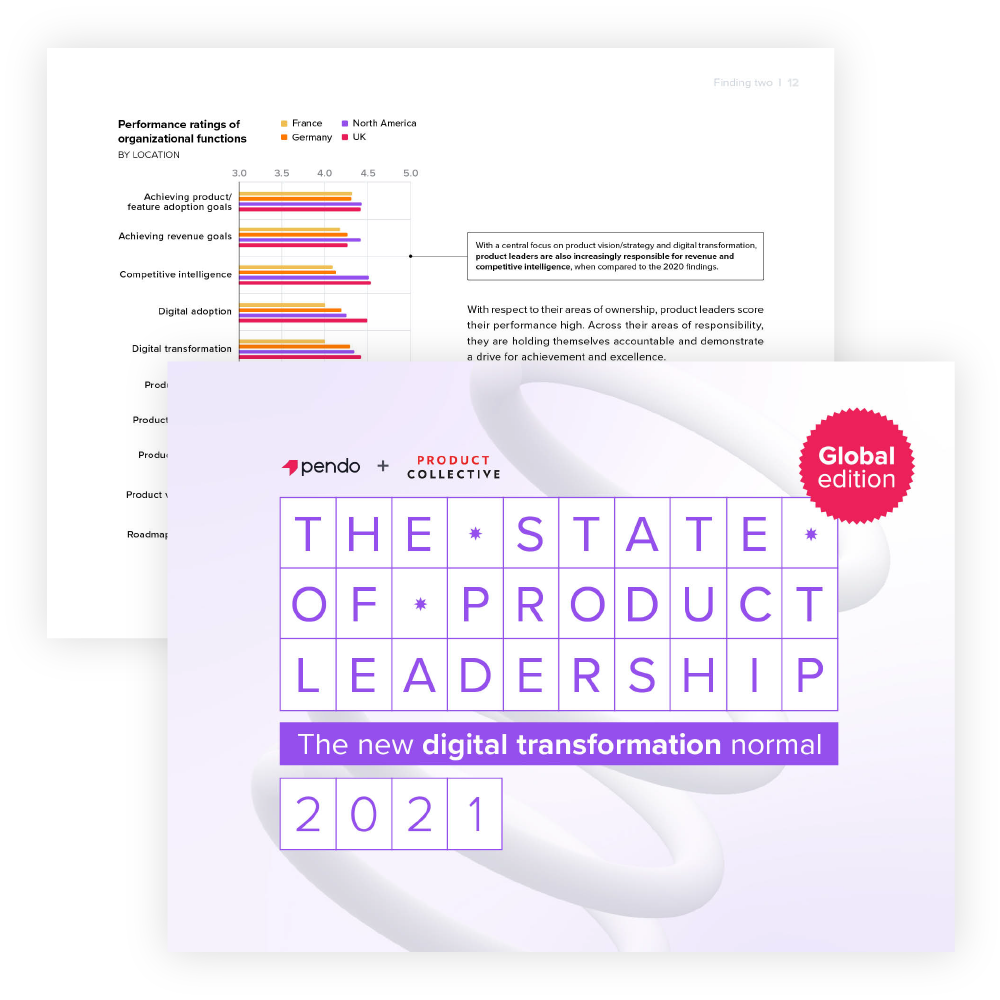
Inhaltsverzeichnis
- The big picture
- Wen wir befragt haben
- Finding 1: Digital transformation ownership
- Finding 2: Connecting product and revenue
- Finding 3: Top success metrics
- Finding 4: The added pressure of digital transformation
- Finding 5: Job satisfaction hinges on support
- Finding 6: The impact of product ops
- Finding 7: Becoming more data-driven
- Recommendations
In a rush?
Download the PDF for later
Each year, Pendo and Product Collective set out to take the pulse of the product industry and examine the evolution of the product manager (PM) role. The world has changed a lot since our last release of The State of Product Leadership–and product management is no exception. The shift to digital has accelerated significantly, putting product leaders at the forefront of business decision making.
Now in its fourth year, the 2021 survey and analysis coalesce around the idea of momentum: How can product leaders stay on top of this historic time of fast-moving change? The report is based on a survey of product professionals in the United States, Canada, the United Kingdom, France, and Germany, and reveals seven key findings. Some insights may seem intuitive, while others speak to the unique position today’s product leaders find themselves in–and how they can make the most of it.
Who is spearheading digital transformation?
Product leaders are at the forefront of digital transformation, with two-thirds of respondents perceiving product and R&D teams to be responsible for these efforts.
Technical expertise is on the rise
While product pros come from diverse backgrounds, there is an increasing likelihood for product leaders to have a technical academic background–a trend that dates back to 2019.
How product operations shows up
As product operations continues to grow in importance, larger companies with higher annual revenues are the most likely to have a dedicated product ops team.
The big picture
The global economy is navigating “a great digital transformation race,” in the words of KPMG—and the stakes are higher than ever.
Every company is crossing a mission-critical chasm between “now” and “future-now” due to accelerating digital adoption timelines. Whether we succeed or fail is entirely up to our individual and collective judgment calls as strategists, managers, and builders.
Given the speed at which we’re moving—and the exhaustion that many of us are feeling—one of the biggest challenges we face is getting ahead of the risks of a misstep. How do we take the right steps forward while holding on to our health and sanity? As the person responsible for translating ideas into features, the product leader’s role has never been more important. The 2021 State of Product Leadership survey focuses on the question of how to empower that individual.
Jedes Jahr schließen sich Pendo und Product Collective zusammen, um die Kunst des Produktmanagements und die Entwicklung der Rolle des Produktmanagers (PM) besser zu verstehen, indem sie Informationen über leitende Produktmanager aus verschiedenen Unternehmen weltweit einholen. So erhalten wir eine neue Perspektive und Wertschätzung für einen Unternehmensbereich, der uns am Herzen liegt. Und wir können die Ergebnisse mit unserer Community teilen, um neue Gesprächsthemen und Debatten anzustoßen.
Now in its fourth year, the 2021 survey and analysis focus on the topic of momentum. How can product leaders stay on top of this historic time of fast-moving change? The report begins with seven key findings that surfaced from respondents across product teams in the United States, Canada, the United Kingdom, France, and Germany. At the end of the report, we synthesize these findings into actionable recommendations to help you put these learnings into practice.
Wen wir befragt haben
In December 2020, we surveyed 600 product managers and executives working largely for B2B software companies and traditional enterprises in the United States, Canada, the United Kingdom, France, and Germany. Here is a summary breakdown of the respondent profile:
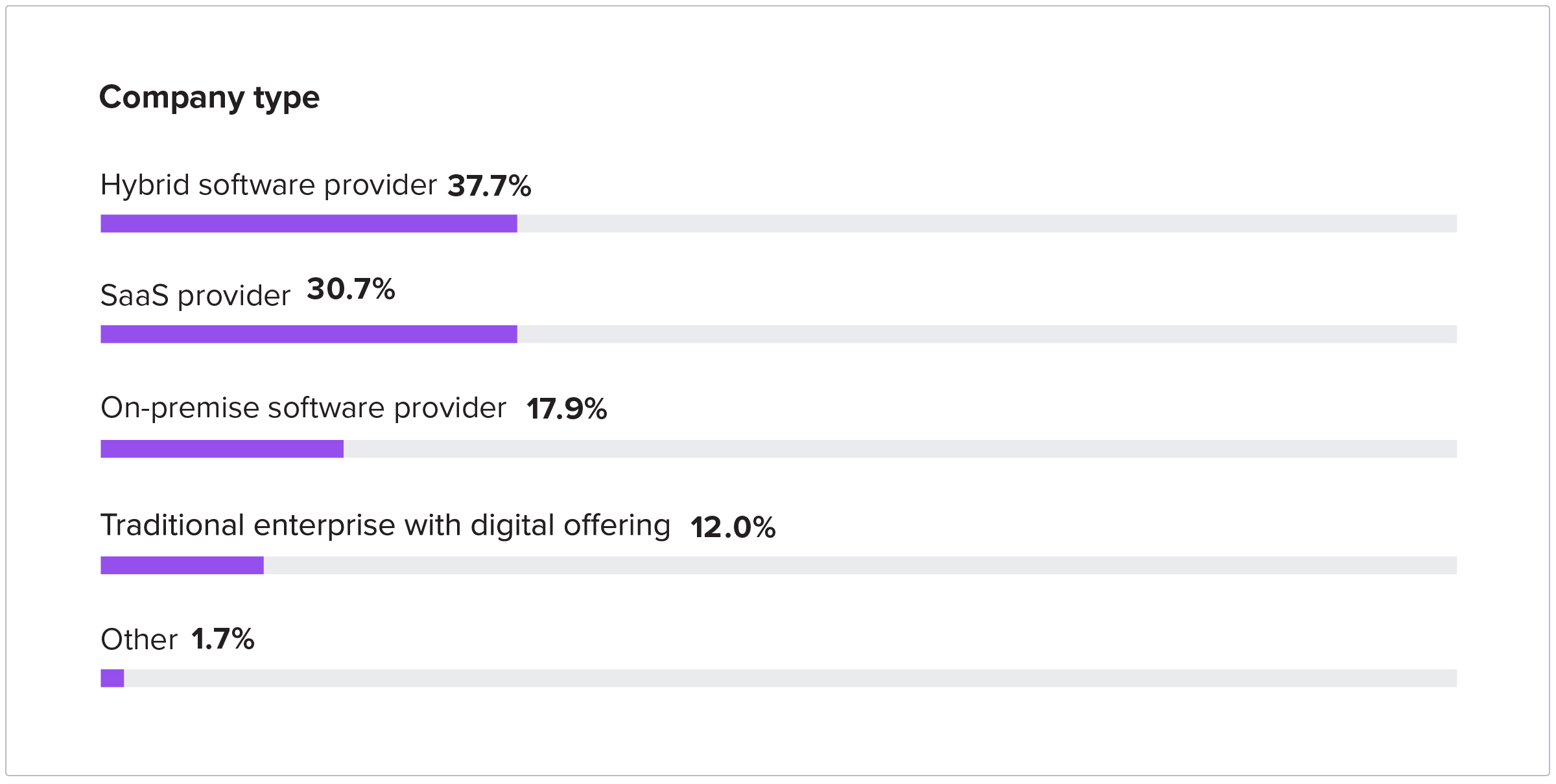


Key Findings
Finding 1: Digital transformation ownership
While digital transformation is a team effort, product leaders are in the driver’s seat.
Across companies of every size in our survey sample, product teams are setting the strategy and roadmap for digital transformation. Respondents indicated that product and R&D teams are perceived to be the most responsible for digital transformation (66%), followed by the executive team (30%), and then sales/marketing (26%).
Responsibility levels for product teams increase at larger companies with higher annual revenues.
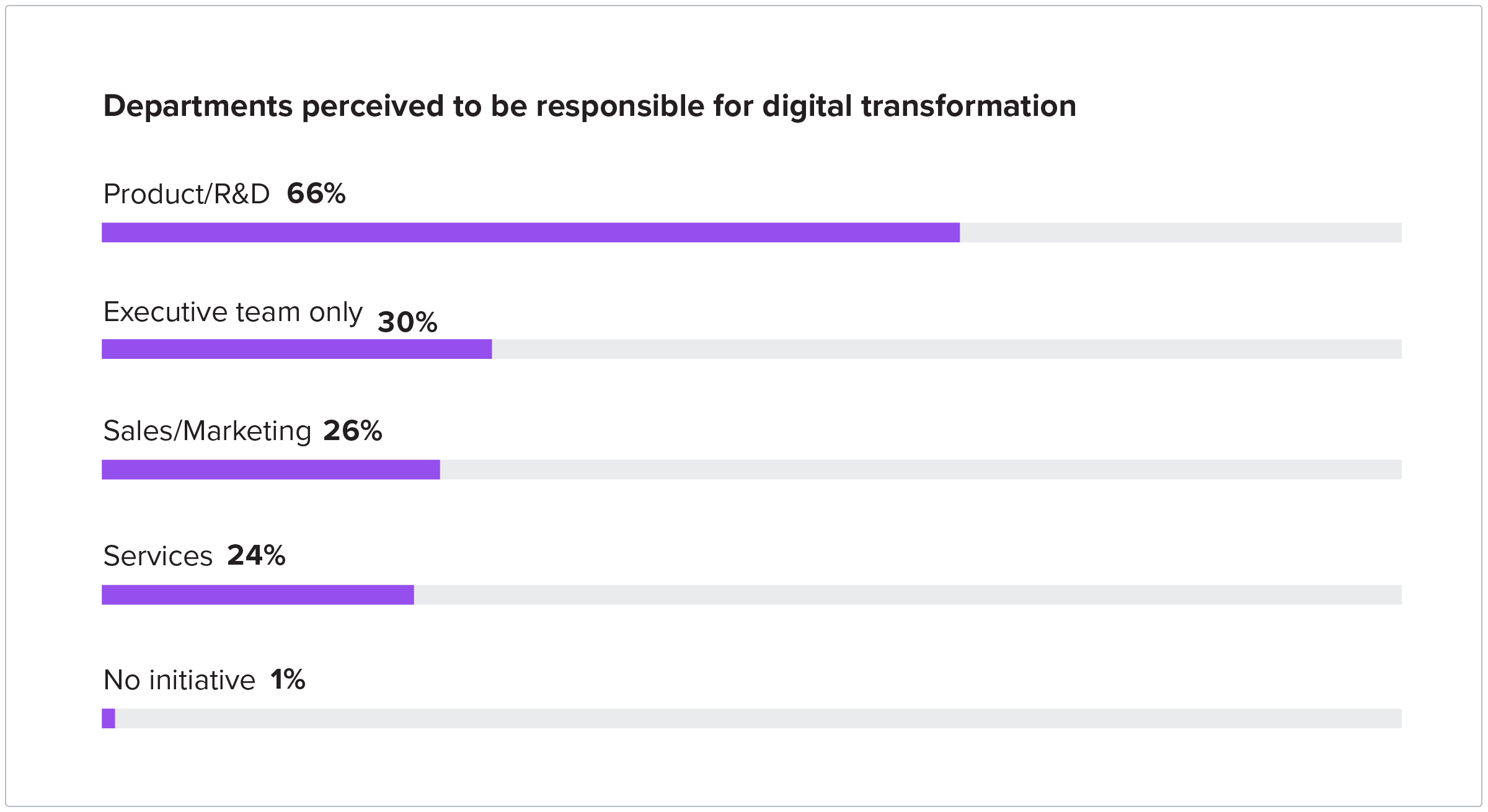
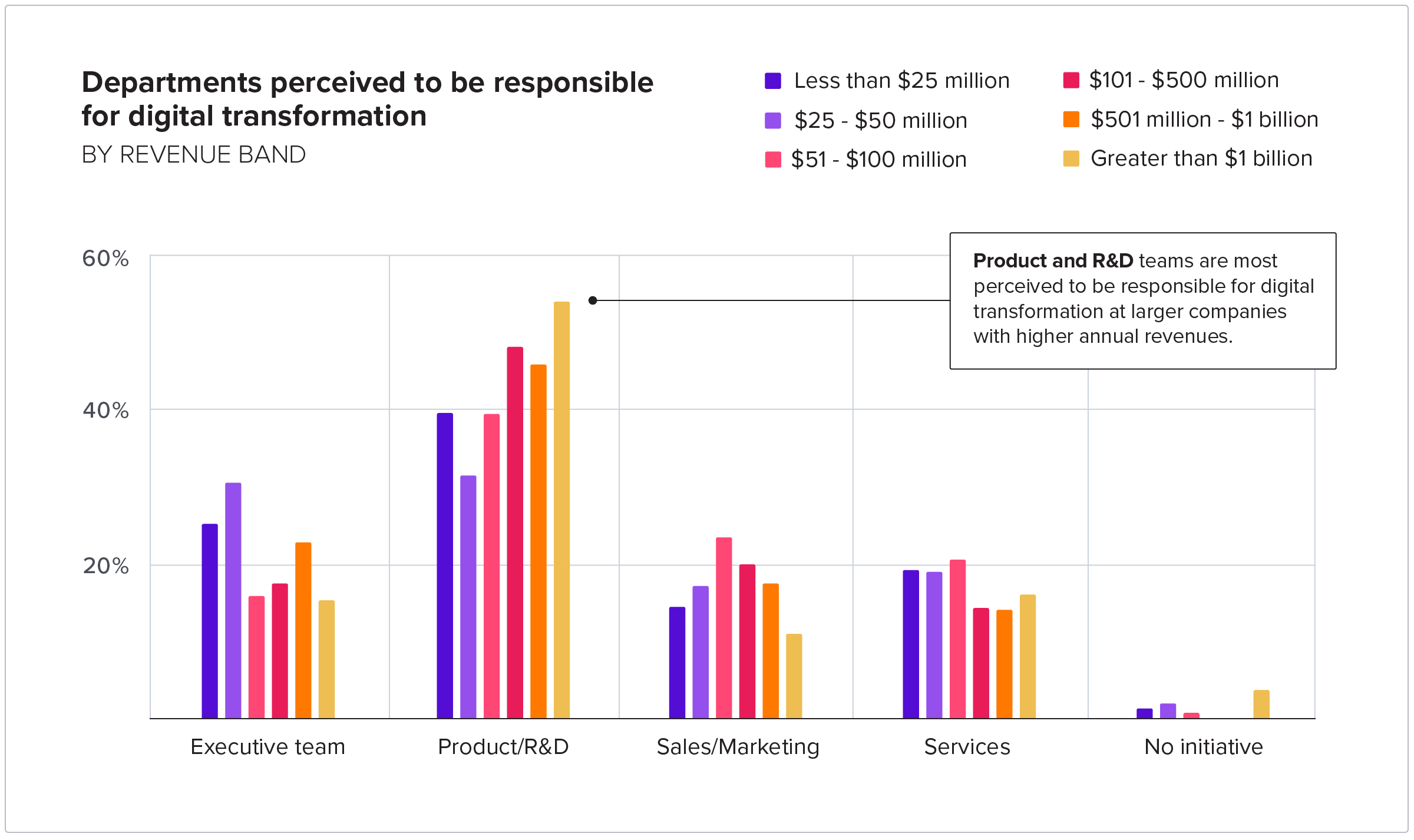
Product leaders are also builders with superior abilities to execute tactically—in previous years’ surveys, we found an increasing likelihood for product leaders to have a technical academic background. The 2021 survey validates this year over year trend that dates back to 2019.
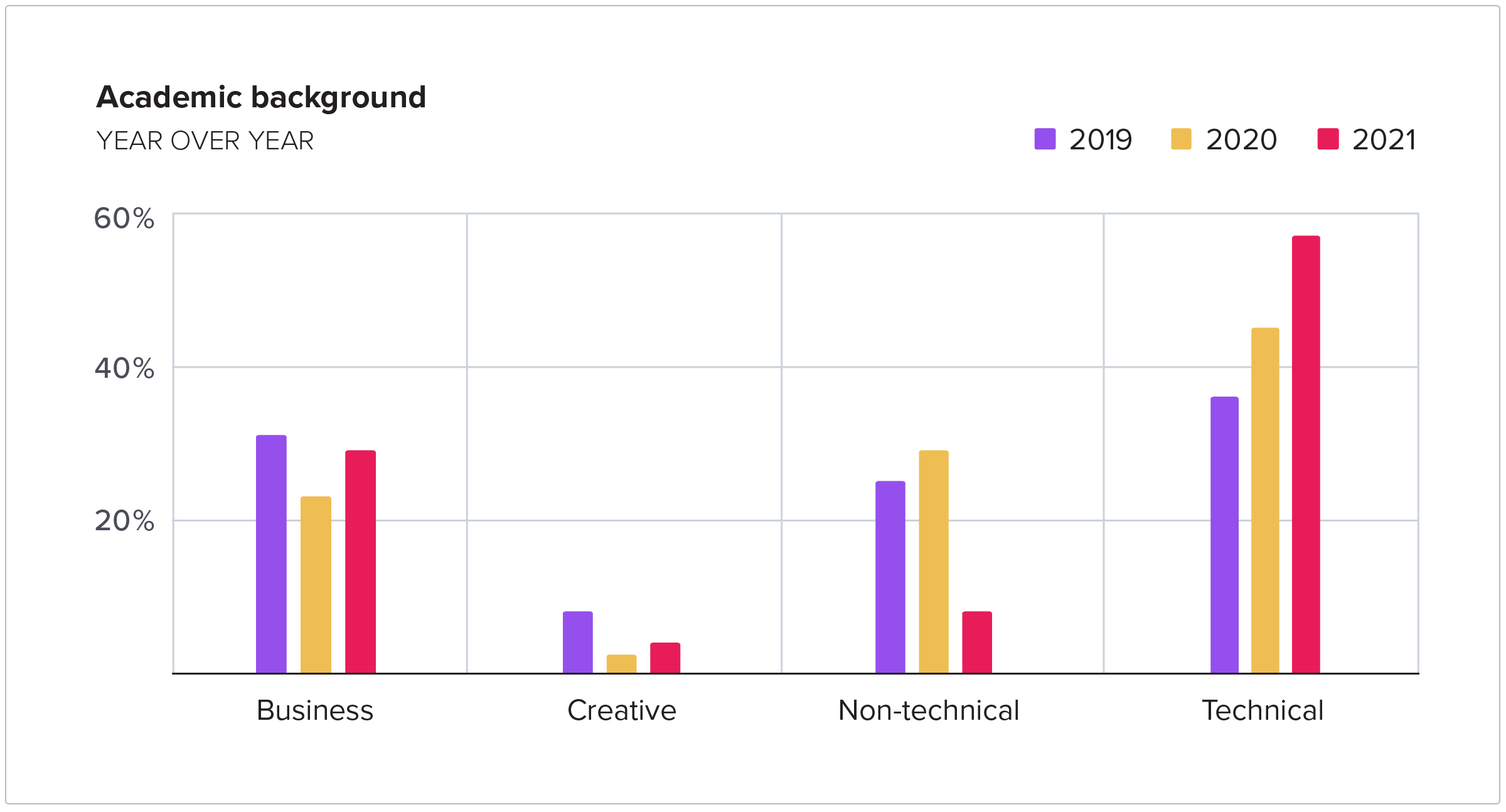
Finding 2: Connecting product and revenue
Product expertise is critical for both short-term and long-term revenue outcomes.
Product organizations are highly cross-functional, with teams being responsible for multiple moving parts in a business. Even with a central area of focus around product vision/strategy and digital transformation, product leaders are working across business functions ranging from design/ UX to marketing, sales, and customer support.
Given this breadth of involvement and expertise, it is unsurprising that companies are turning to product leadership with heightened revenue responsibility during the uncertainty of the pandemic. Product-led expertise is more critical for a company’s survival and longevity than ever.
In the 2021 survey, 18% of respondents reported that they are responsible for revenue, while 60% shared that they are accountable or consulted. Meanwhile, 14% of product leaders shared that they are responsible for competitive intelligence, and 57% that they were accountable or consulted.
This is an increase from last year, where 6% of product leaders reported that they were responsible for revenue goals, and 4% said that they were responsible for competitive intelligence.
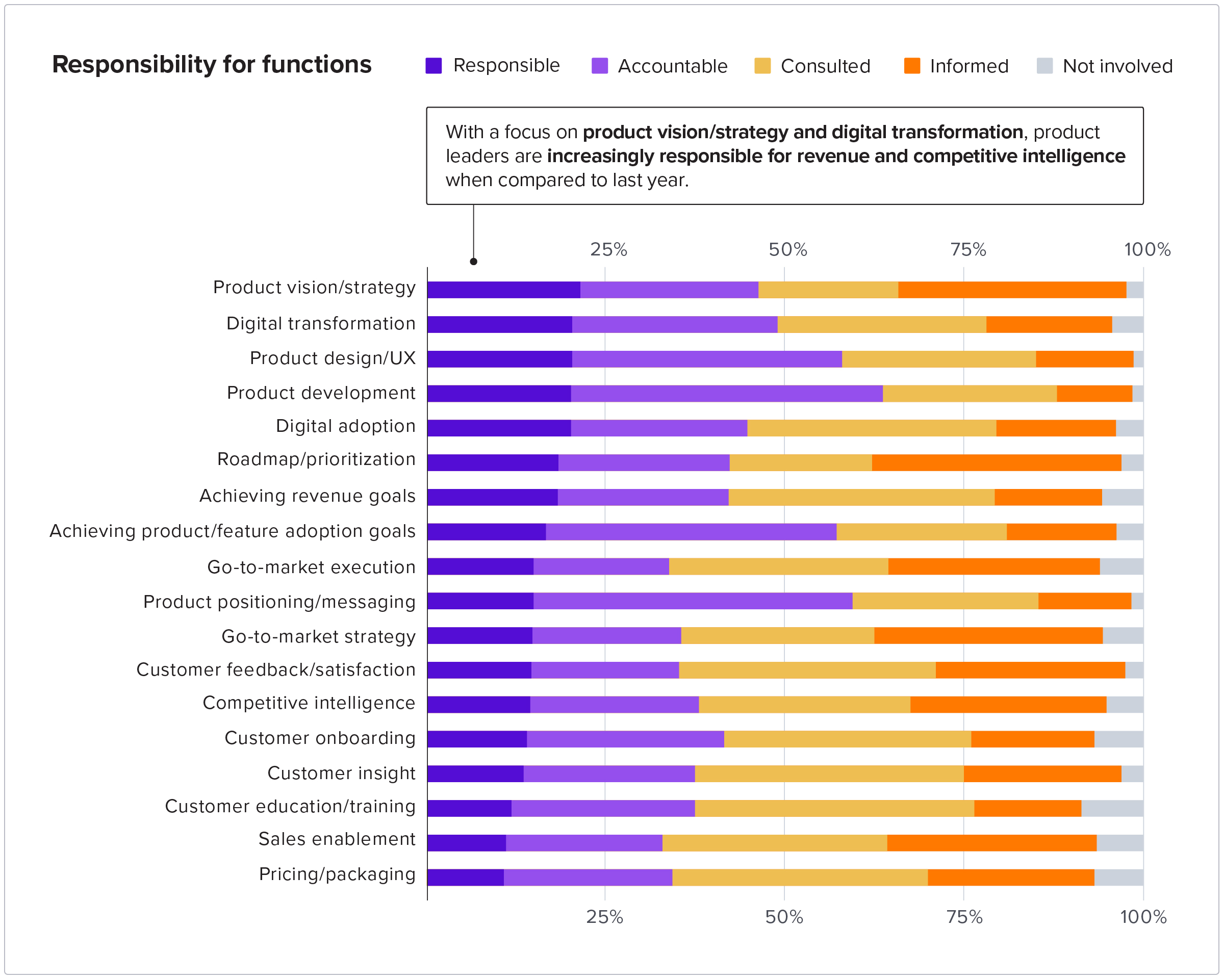
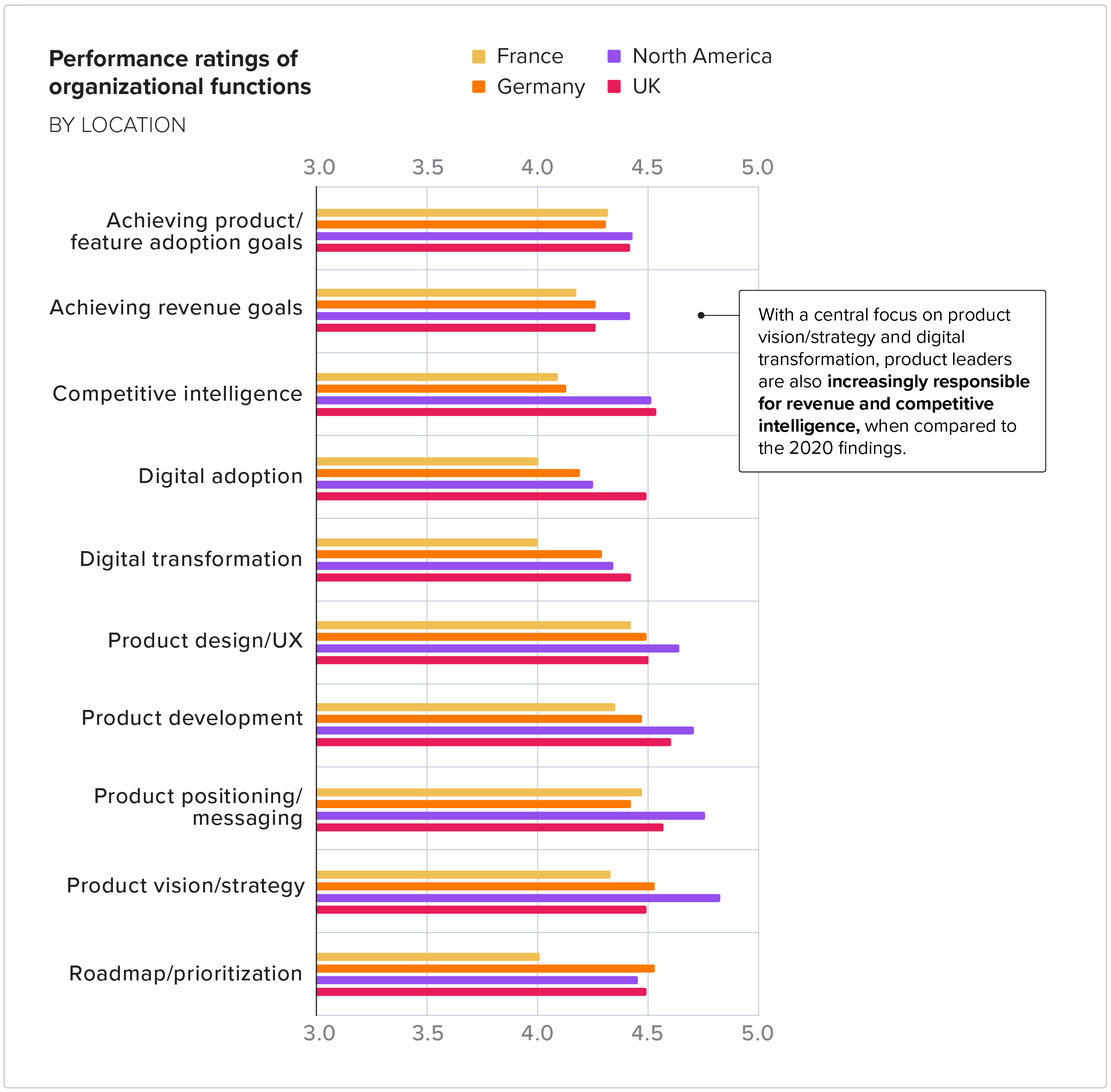
With a central focus on product vision/strategy and digital transformation, product leaders are also increasingly responsible for revenue and competitive intelligence, when compared to the 2020 findings.
With respect to their areas of ownership, product leaders score their performance high. Across their areas of responsibility, they are holding themselves accountable and demonstrate a drive for achievement and excellence.
Finding 3: Top success metrics
Delivery is the top success metric for product leaders.
One of the biggest challenges with digital transformation is measuring success. How can companies capture progress toward the broad milestone of being future-ready?
In the eyes of product leaders, success is about keeping promises. Organizations measure product management success for customer-facing apps and internal employee-facing apps by product/feature/roadmap delivery. Revenue, product adoption/usage, and feature adoption/usage are also important metrics for product teams to capture.
Put short, product leaders want their work to be useful and valued. Monetization comes second to delivering on promises to customers and internal stakeholders.
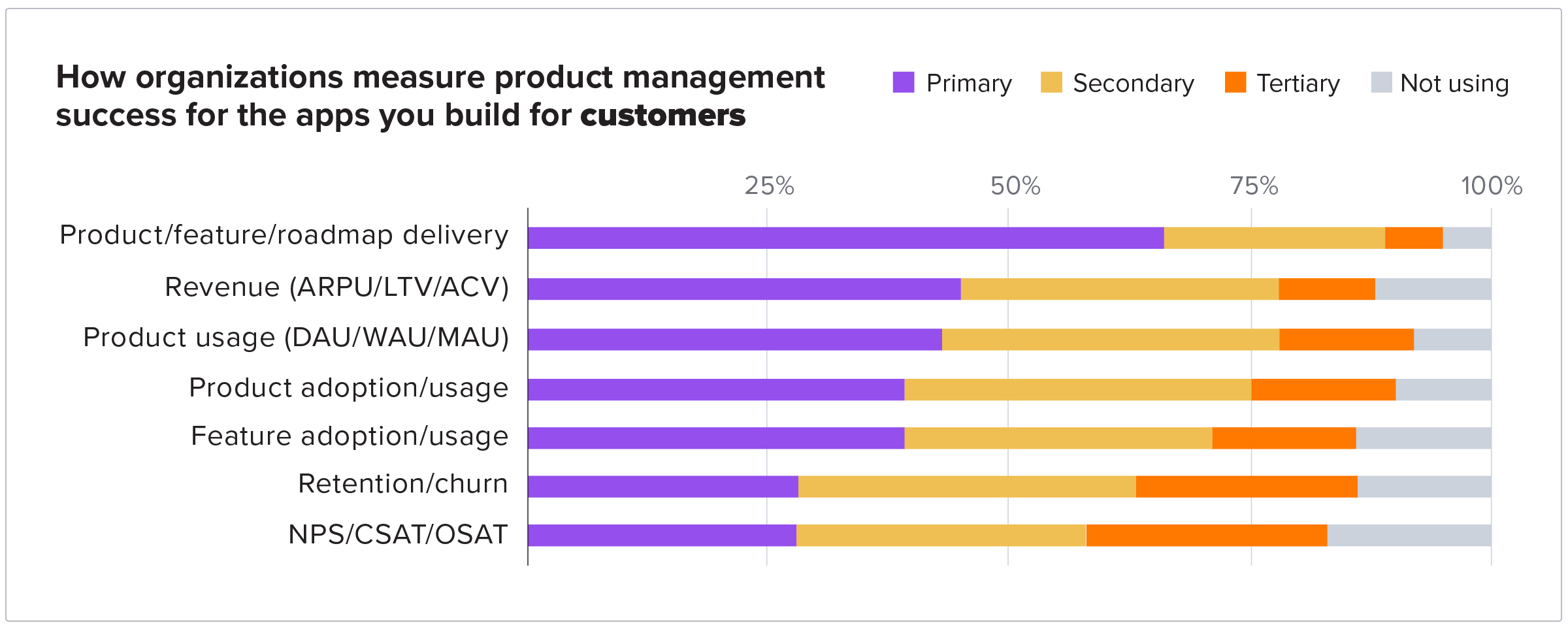
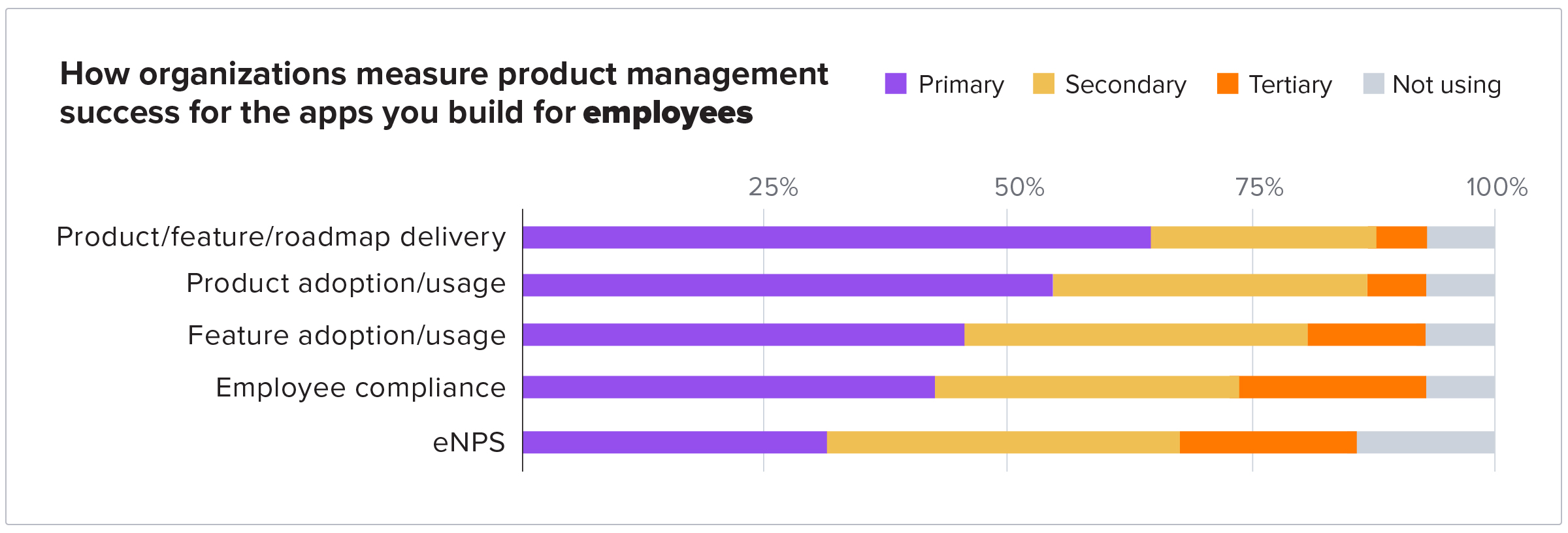
Finding 4: The added pressure of digital transformation
Digital transformation is putting added pressure on product teams.
Digital transformation initiatives are high-stakes, with absolutely no wiggle room for error. It’s understandable that product teams may be feeling extreme pressure to perform—especially in the midst of a global humanitarian crisis with mental health consequences. Keep in mind that product leaders are highly skilled technical experts with a breadth of cross-functional expertise.
One of the questions we asked product leaders in this year’s survey is how likely they would be to recommend their career paths to a friend. Out of a total net promoter score (NPS) range from -100 to 100, the average score was 9.
Diving deeper into this data, there are several stories that influence this high-level picture. For one, product leaders at SaaS companies reported a higher average NPS score (17) than individuals at traditional enterprises with digital offerings (8) or on-premise software providers (5).
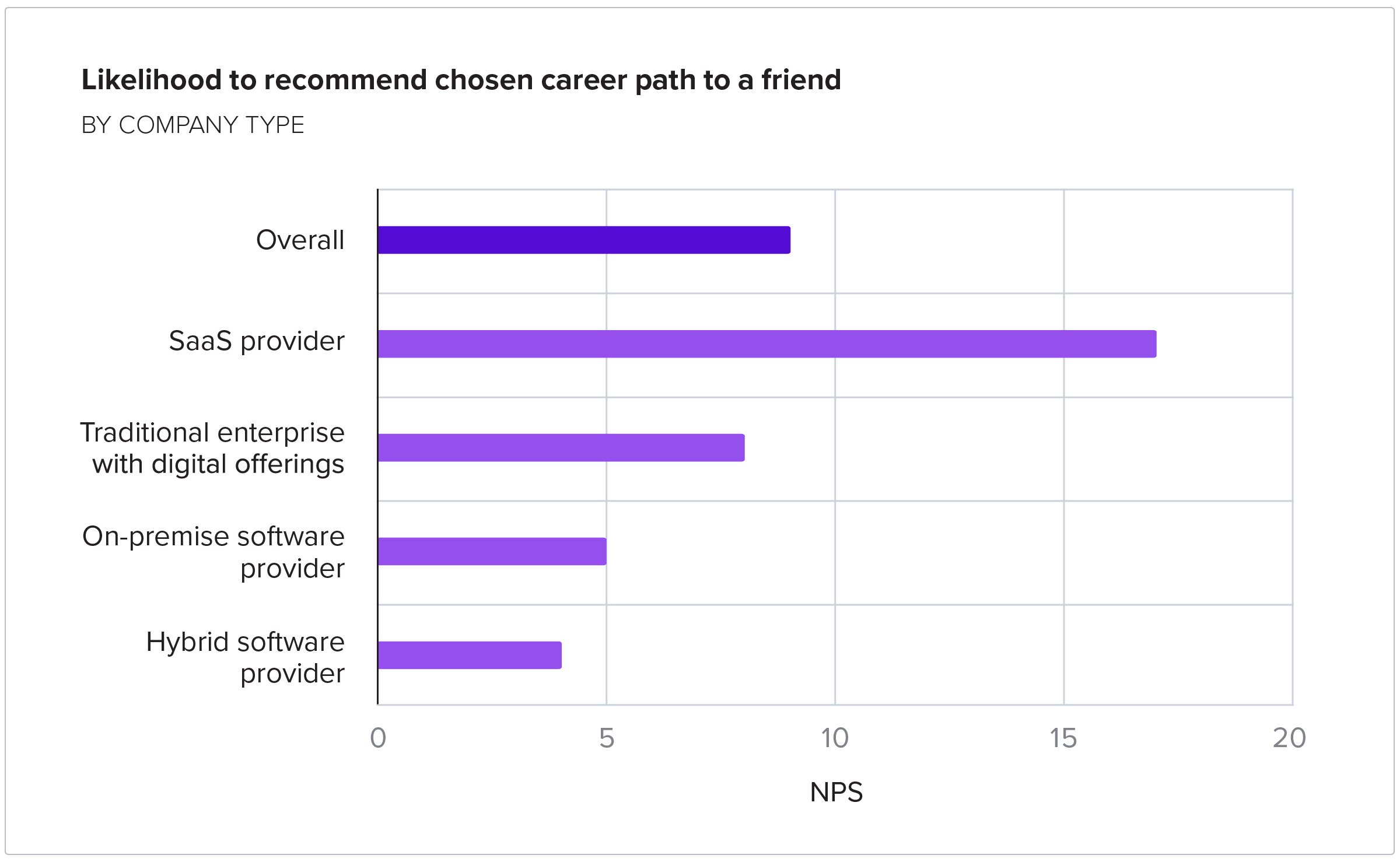
Executives were also more likely to report a higher level of job satisfaction than managers and individual contributors. Meanwhile, NPS scores were highest (19) at companies with $51-$100M in revenue, the equivalent of a Series B or Series C funded startup, and lowest at $1B+ companies (-6).
It’s important to examine these findings relative to the trends observed in Finding 1. There appears to be a correlation between responsibility for digital transformation and job satisfaction. Product leaders at $1B+ companies who have the most responsibility are also the least happy in their roles. It is possible that product pros find more fulfillment in mid to late-stage startup environments that may also be more likely to prioritize health and wellness.
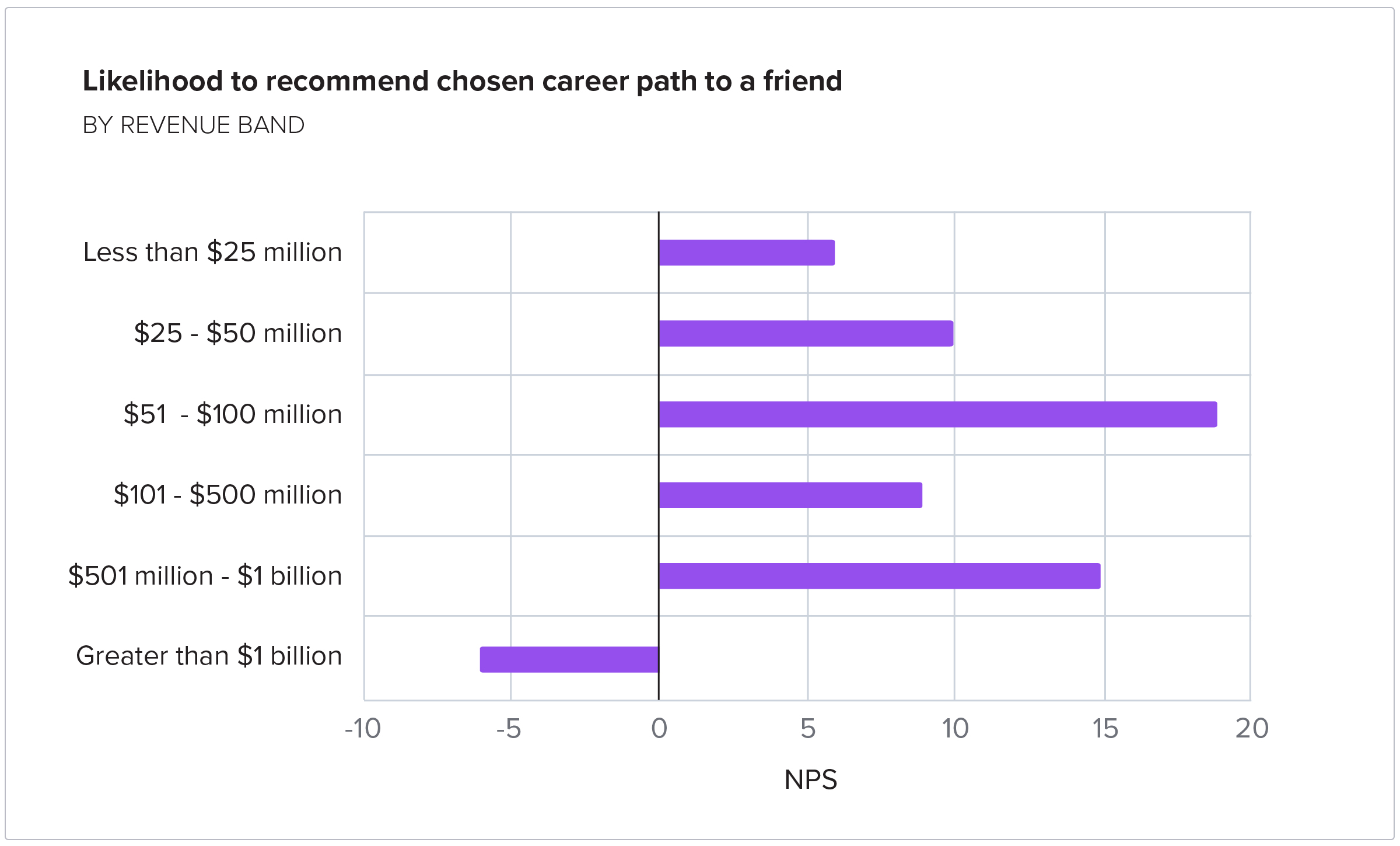
Finding 5: Job satisfaction hinges on support
Product leaders with more operational support and higher career responsibility report higher job satisfaction.
Product leaders are happier when companies empower them to do great work. Our survey found a correlation between career satisfaction and responsibility—the more ownership they had at work, the more likely they were to recommend their career paths to others. NPS scores were highest for product leaders who were responsible for a product (18). This perspective reflects that product leaders are best equipped to navigate on-the-job pressure when they have autonomy in their roles.
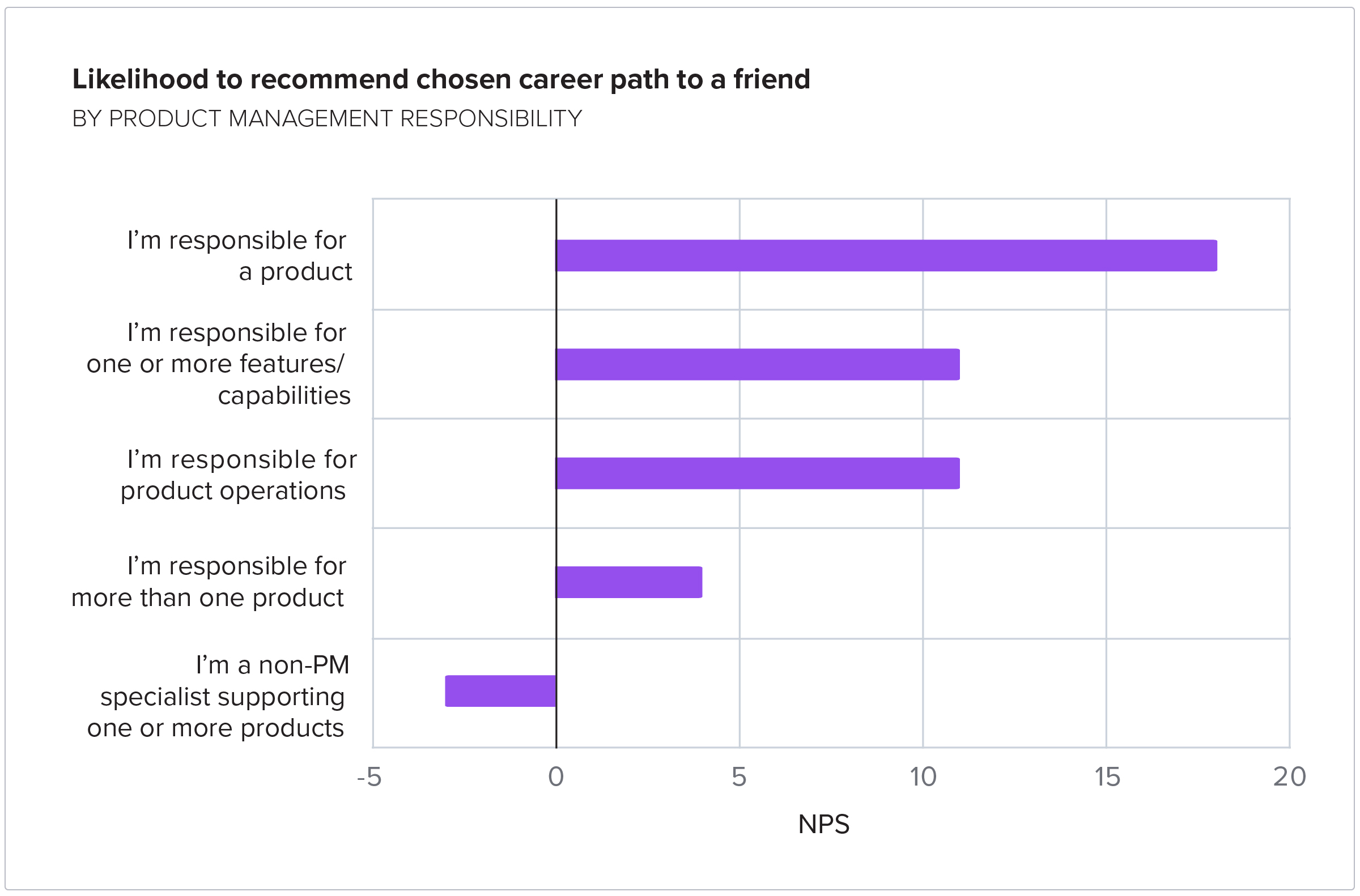
Meanwhile, product leaders were more satisfied with their jobs when they received ample support at work. Respondents at companies with a dedicated product operations team reported the highest NPS scores (21) compared to others.
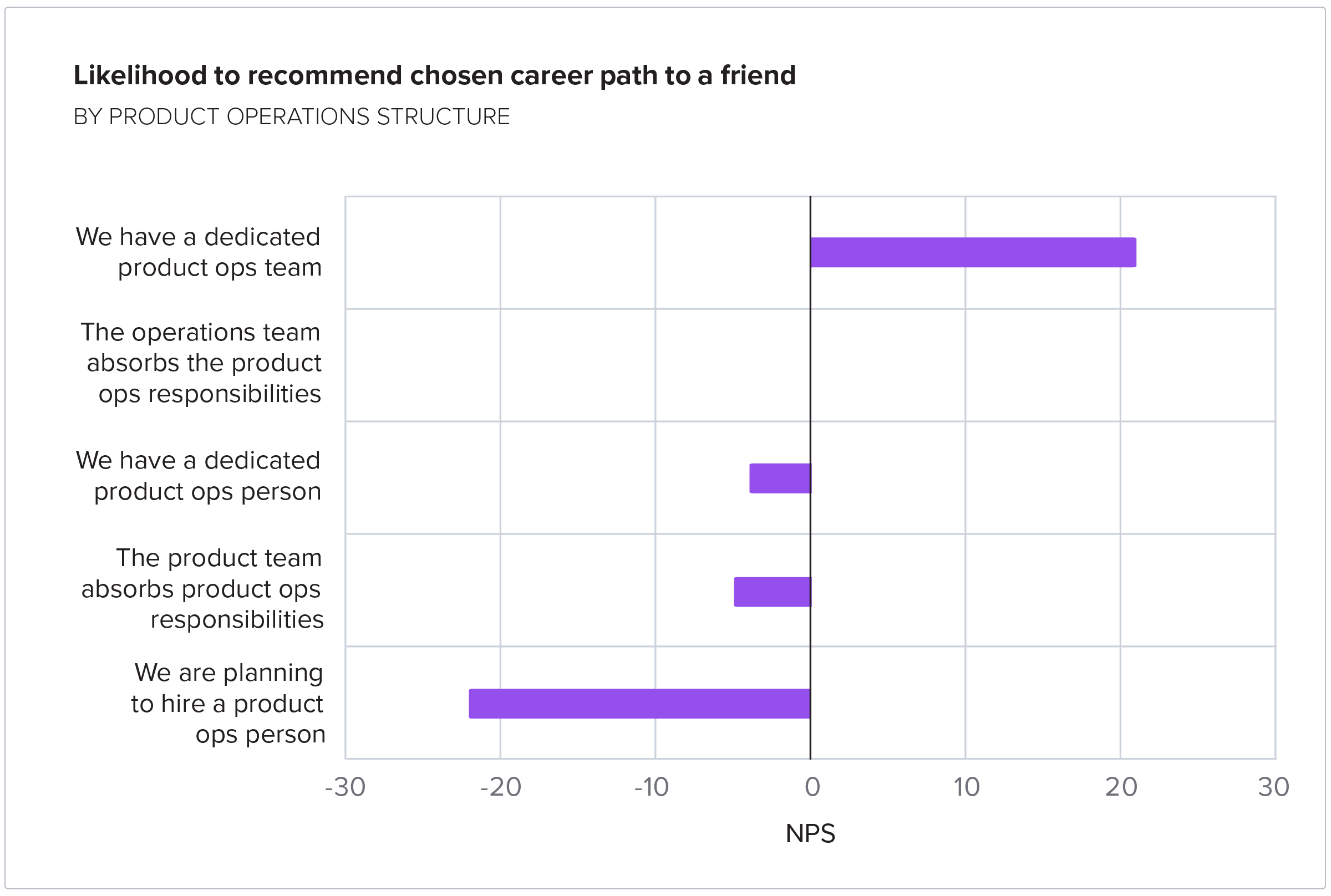
Finding 6: The impact of product ops
Product operations teams help product leaders align more closely with their customers’ needs.
Companies of all sizes rely on dedicated product operations teams, with larger firms being more likely to have this heightened level of support. In the 2021 survey, 53% of respondents reported having a dedicated product operations (product ops) team.
(In comparison, 52% of respondents in the 2020 survey reported having a dedicated product ops team.)
Product ops teams work hand-in-hand with product leaders to support product vision/strategy. While product leaders are focused on connecting the dots to form a cohesive digital transformation picture, it’s the product ops teams that are working hand-in-hand with customers on tasks related to onboarding and feedback collection.
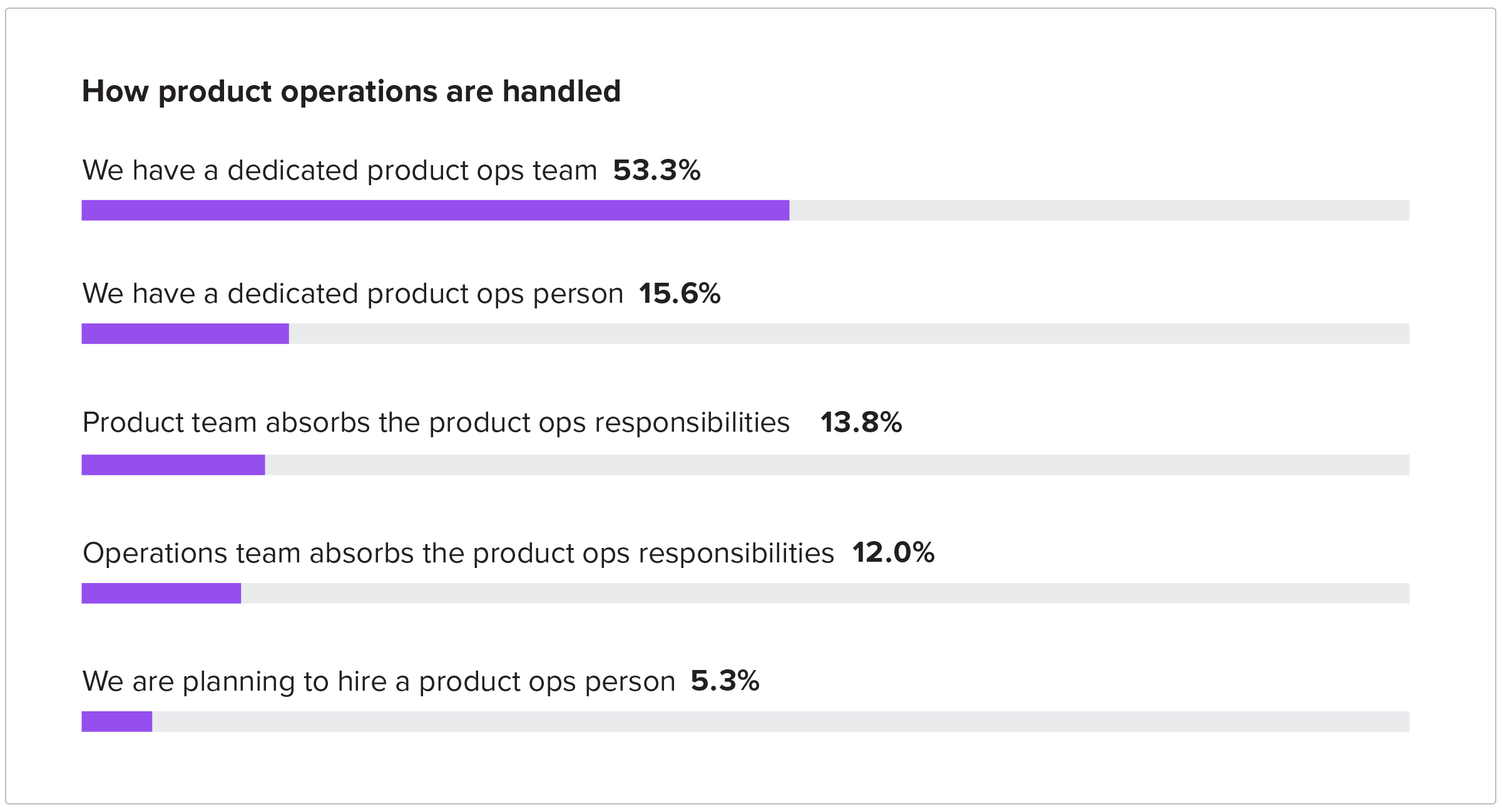
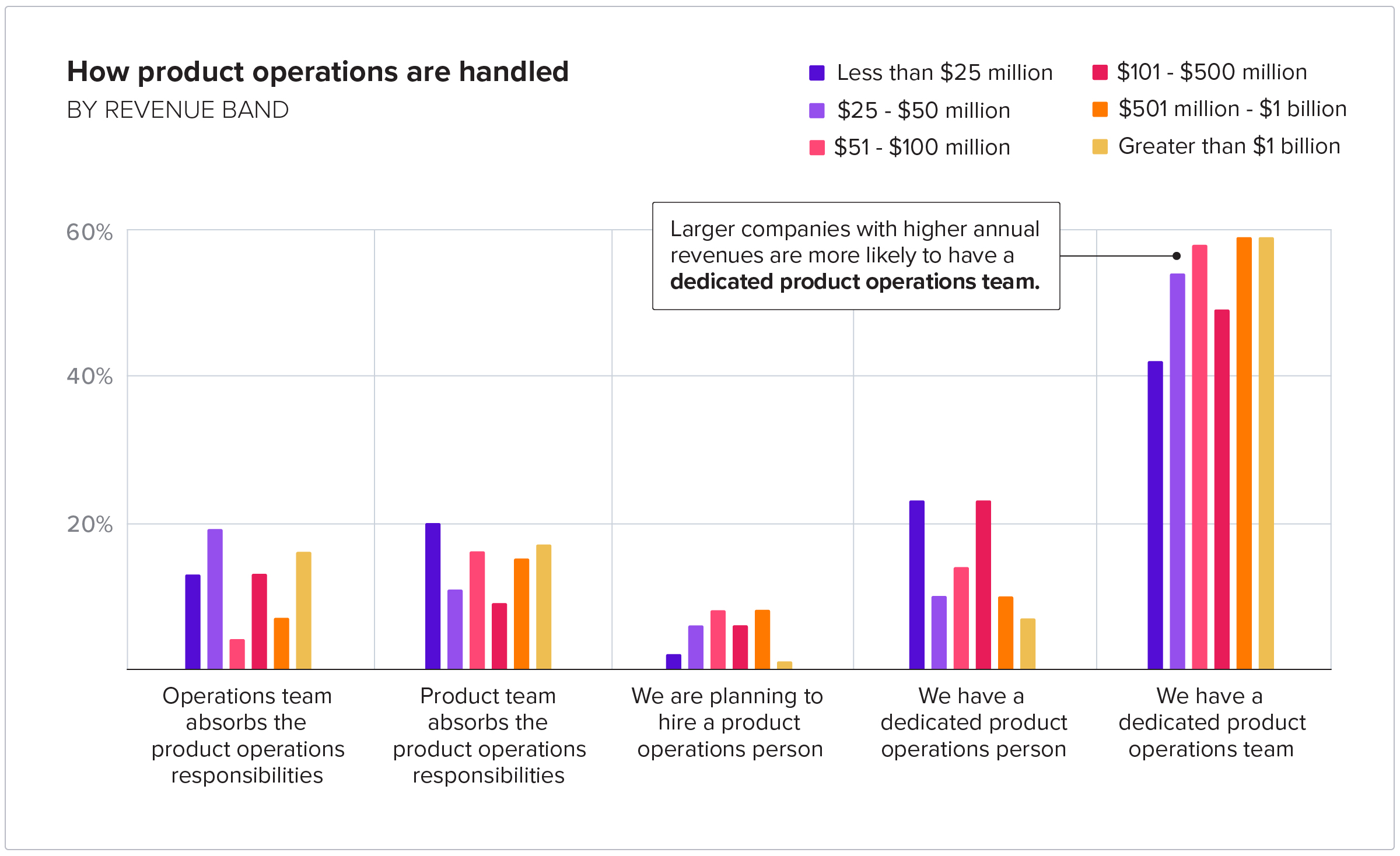
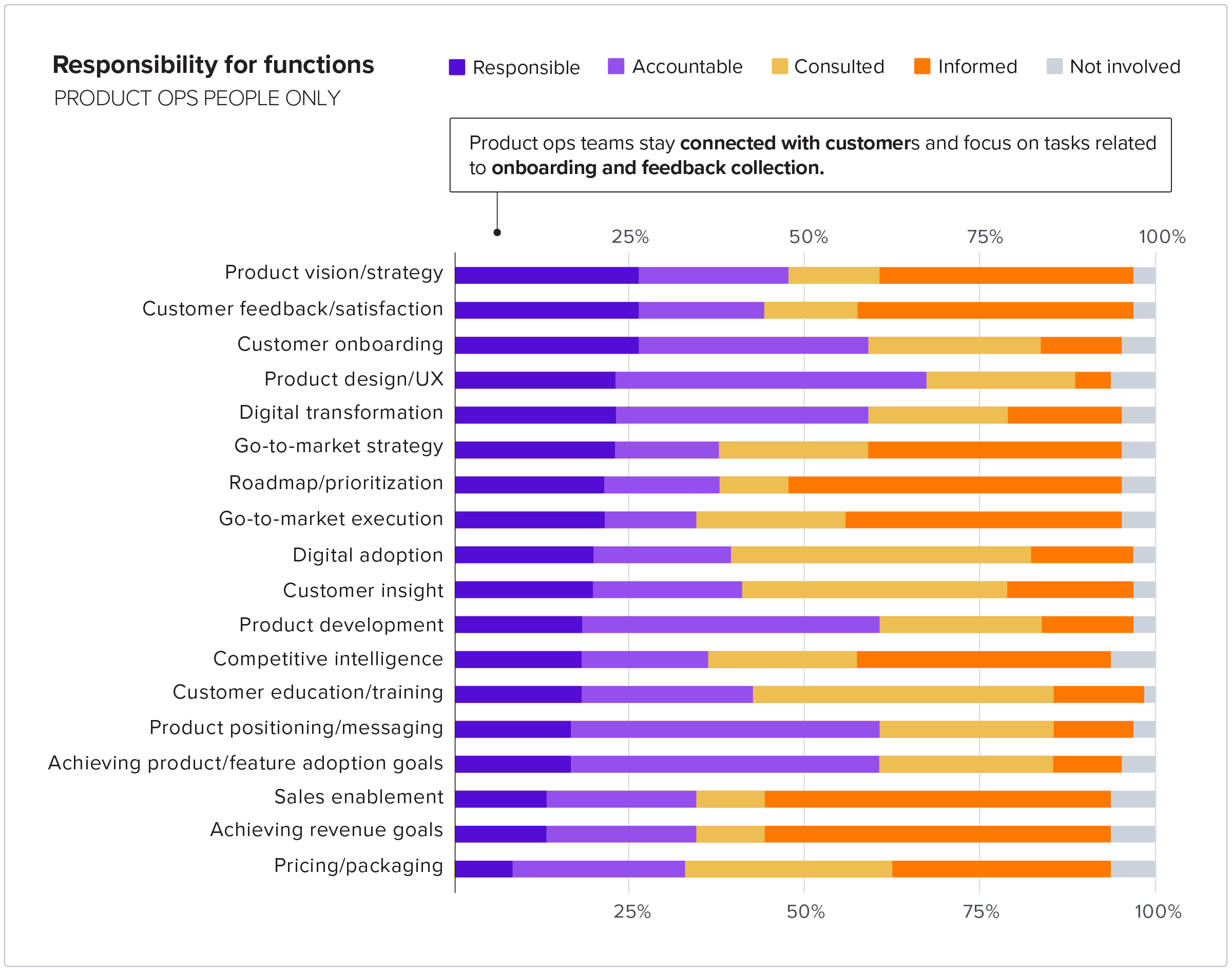
Finding 7: Becoming more data-driven
There’s room to become more data-driven.
One way to better support product teams—and help them work through the pressures of their roles—is to build more systems for data-driven feedback loops. Within product-led organizations, only 64% of respondents reported making decisions based on data rather than instinct. In comparison, 71% of respondents in marketing-led organizations reported being data-driven rather than instinct-driven.
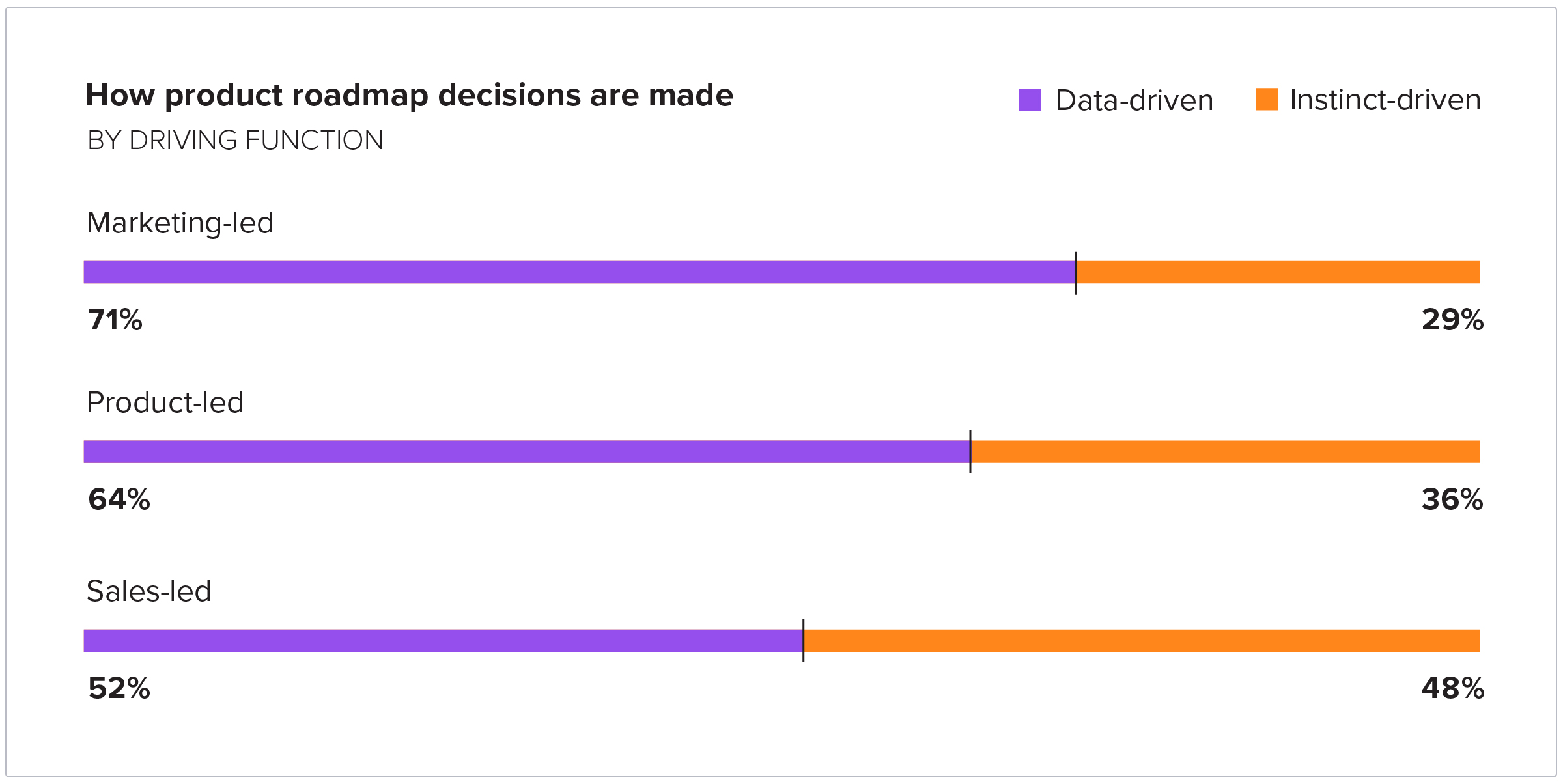
Respondents from traditional enterprise companies were more likely to be data-driven (75%) than SaaS companies (60%). One possible reason for this trend is that larger companies may be more likely to have access to sophisticated systems, with clearer definition around their most important metrics for growth.
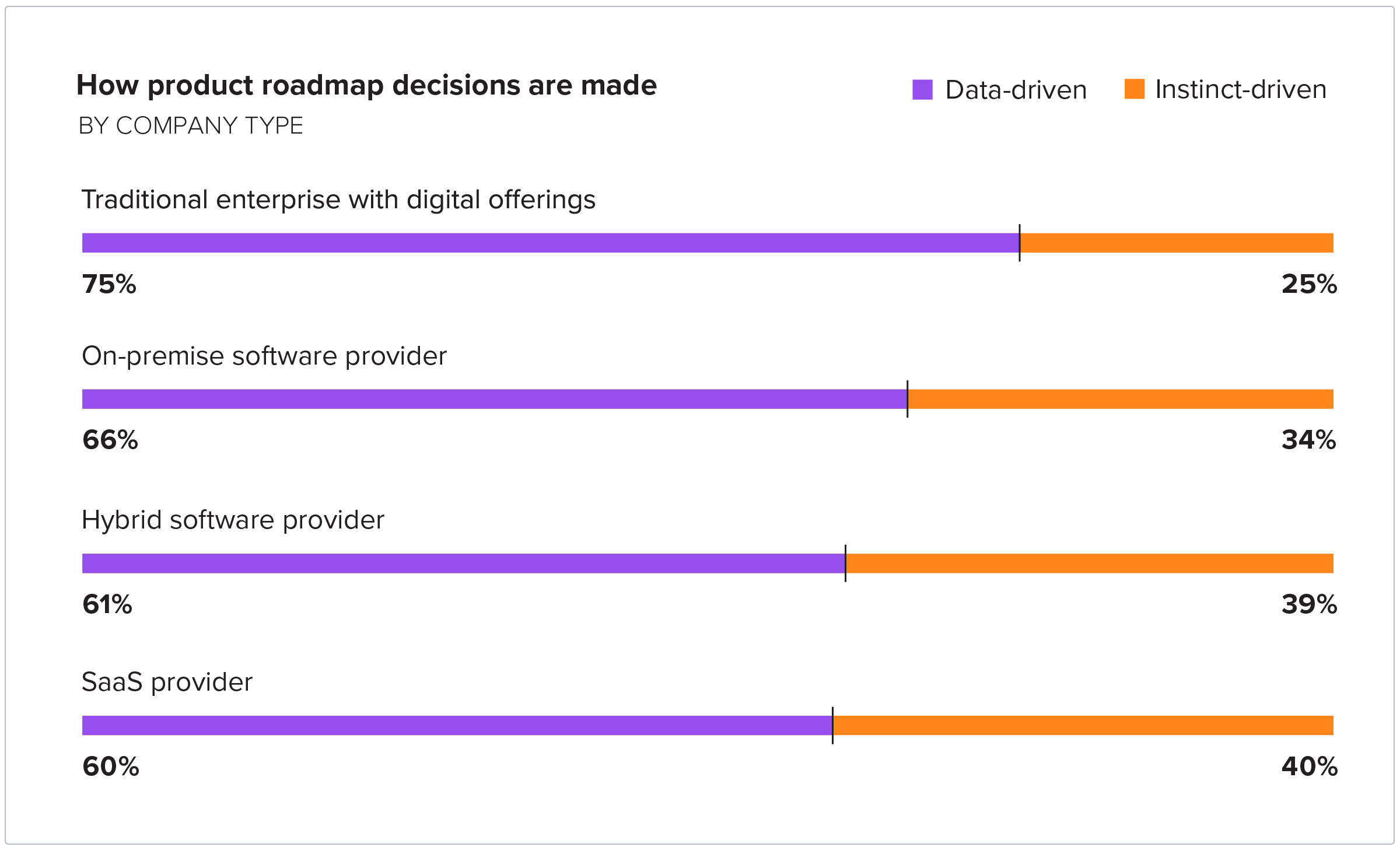
Product leaders in all surveyed regions were (roughly) equally likely to be making data-driven decisions. This suggests a relatively equal competitive playing field for companies around the world. No region appears to be a clear “leader” or “laggard” in data-driven digital transformation initiatives.
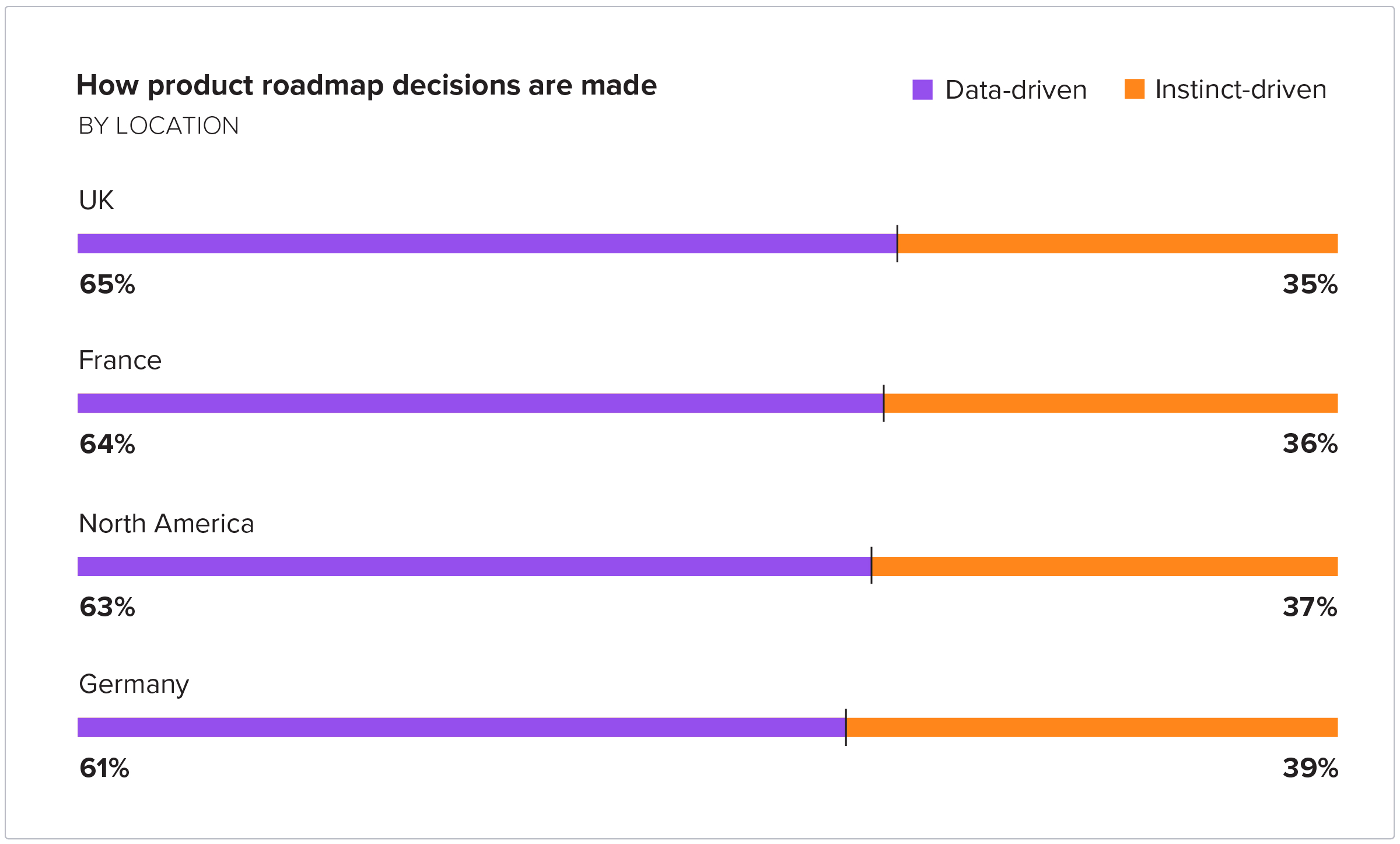
Recommendations
Recommendation 1: Recognize the practicalities of digital transformation.
Now more than ever, businesses have a responsibility to deliver value to their stakeholders. Every organization is under pressure to adapt to new digital-first realities that customers are demanding. Product leaders have a unique perspective into how to translate ideas into lived realities due to their innate cross-functional understanding. Product leadership is essential to bringing the aspirations of the global digital transformation movement to life.
Recommendation 2: Articulate support needs clearly.
Product leaders are tasked with superhuman responsibilities with human constraints and timelines. Self-care isn’t just about taking breaks, getting enough sleep, or taking time to rest—it’s about advocating for resources to ensure that teams stay empowered. Solutions will come from both technology and operational support. Digital transformation is a sprint and a marathon. The right foundation is everything.
Recommendation 3: Uncover why people aren’t happy at work.
Now is not a time to be cutting corners, especially with employee wellbeing. Unhappy product leaders will not be able to perform their best. These individuals are doing hard work, under immense pressure. Remember that 2022—and the future—are around the corner, and job satisfaction isn’t something that fixes itself.
